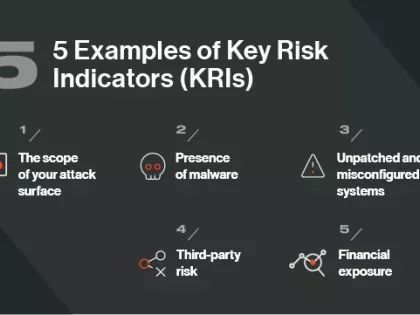Your Attack Surface is Growing, Your Security Risk Assessments Should Evolve Too
Tags:

Security risk assessments are an important tool in your organization’s arsenal against cyber threats. They shine a spotlight on areas of risk in your digital ecosystem, inform and prioritize cyber risk mitigation strategies, and ensure hard-earned resources are allocated where they’re needed most. Assessments can also help you evaluate your third parties to mitigate the very real possibility that they’ll introduce unwanted risk into your organization.
As valuable as they are, security risk assessments are fraught with challenges. To complete them successfully, security teams must gather huge amounts of data from disparate tools – a highly manual process. That data must then be interpreted for actionable insights. This all takes time and can distract everyone from high-value tasks. If third parties are involved, risk assessment questionnaires must be collected and reviewed and may not even reveal the true extent of a vendor’s cybersecurity posture. Traditional assessments also only reflect a point-in-time and don’t account for evolving cyber security threats, vulnerabilities, and risk.
To properly conduct an internal or vendor security risk assessment, you need to combine automation with data-driven tools that provide a continuous, accurate picture of cybersecurity risk both internally and across your third-party ecosystem. It’s not as hard as it sounds. Let’s take a look at three ways to achieve this.
1. See your attack surface the way others do
One of the biggest challenges to completing any security risk assessment is that digital ecosystems are expanding. The cloud, IoT, remote offices, and far-flung home-based employees have extended the attack surface beyond the network perimeter making it hard to pinpoint where cyber risk exists.
One way to close these visibility gaps is to continuously scan your attack surface so that you can see it the way the bad guys do. Use an attack surface scan to quickly validate your digital footprint, assess high areas of cyber risk exposure, and make informed, comparative decisions about where to focus your cybersecurity efforts.
For example, if your business has 100,000 records stored in an AWS cloud environment and the scan identifies 120 severe material findings, such as vulnerabilities or infections, then this environment should be prioritized for mitigation. However, a scenario where only three material findings are identified among a million stored records can be reprioritized if other more material findings are found.
2. Benchmark risk against your peers
Like all business risk, cybersecurity risk is relative to each business. The only way to understand the nature of that risk as it pertains to your company is to compare your organization’s cybersecurity posture to that of similar organizations.
By comparing risk vectors within your industry, sector, and peer group you can determine security targets that your business should strive to achieve and where your security program may currently fall short. From there you can create improvement plans and prioritize your cyber risk-reduction efforts where they’ll have the greatest impact. You can also share your benchmarking assessment with business leaders and report more effectively on how your program aligns to or exceeds industry standards – without the guesswork.
3. Assess third parties based on criticality and risk
Third-party security risk assessments are a critical part of the onboarding process. However, many security managers turn to a “one-size-fits-all” approach, where each third-party is assessed in the same manner. This creates overhead and is unscalable because each vendor receives extended, full-blown assessments regardless of how critical they are to the business.
A better way to conduct these assessments is to tier or group vendors based on perceived risk. In doing so, you can prioritize which vendors receive a more in-depth assessment and which don’t. For example, a vendor that provides an important service or has access to sensitive data, such as an accounting firm, might be grouped among the “High Risk” tier. Meanwhile, a third-party who doesn’t have access to the network, like a commercial cleaning company, can be deemed “Low Risk” and assessed accordingly.
Use a tool like Bitsight Security Ratings to gain an instant snapshot of each third parties’ overall security posture. Depending on how they score, you can prioritize which vendors need the most attention or a more rigorous assessment process. Bitsight also offers a tier recommendation technology to assist in tier selection if you’re unsure where a vendor might fall.
Once onboarded, you can continue to use these same tools and methods to continuously monitor your third parties over time. If a vendor’s security rating drops, automated alerts let you know so you can work with your vendor to mitigate the issue.
Wave goodbye to a "once and done" checkbox approach to assessments
Through automation and data-driven insights, you can significantly reduce the time and resources needed to conduct security risk assessments, better manage risk at scale, and streamline third-party onboarding and lifecycle risk management. Importantly, you’ll also move beyond once and done assessments and gain continuous risk insights in the intervals between larger risk assessments or even supplant those engagements altogether.


